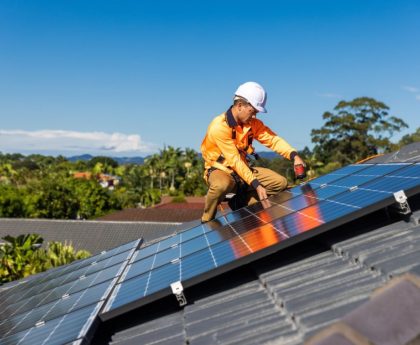A new study published in Nature Energy shows a big change in how Africa might meet its growing need for energy. This research was done by an international team from Politecn di Milano and led by Wyatt Arnold. They explored how floating solar photovoltaics (FPV) could serve as a green replacement for the usual hydropower dams.
Understanding the Potential of Floating Solar
- Coverage, FPV might supply anywhere between 20% to 100% of the electricity we expect from new hydropower dams.
- Energy Contribution, By 2050, FPV could account for about 67% of Africa’s total energy needs.
- Stability, Floating solar might cut down the yearly ups and downs in electricity production by 12%, making it more reliable than hydropower.
Floating solar panels are turning into a smarter, tougher, and eco friendlier way to make electricity. Old school dams can mess up local communities and nature thinks about people having to move out or animals losing their homes. Plus, building dams is super pricey and complex. FPV systems don’t cause these problems.
- Economic Efficiency – Floating solar gets more wallet friendly by the day, almost costing the same as land based solar options now. It’s cheaper to build and keep up too!
- Environmental Concerns – FPV might change how people use reservoirs, but these changes are small compared to the big harm new dams could do to nature.
The research on the Zambezi river basin going through several countries shows that moving money from building new dams to setting up FPV systems can make energy supplies safer and more green. This shift helps avoid too much reliance on hydropower, boosts working together across regions, and keeps a good balance in nature for a long time.
Problems and What’s Next
Floating solar technology offers substantial benefits, yet it also presents challenges. Strong planning is essential to integrate FPV into the existing energy framework without disrupting aquatic environments or impacting local communities. Additionally, this technology requires extensive water surfaces to function effectively. Clearly, meticulous planning and community engagement are crucial when balancing energy production with conservation.
Professors Andrea Castelletti and Matteo Giuliani emphasize the significance of resource planning that considers cross-border impacts and simultaneously addresses needs in energy, agriculture, and environmental protection. “Floating solar offers an opportunity to rethink our approach to managing environment and energy,” Giuliani remarked, underscoring the importance of a forward-thinking and inclusive strategy.
In summary, floating solar is not only a viable option for Africa’s future energy needs but also a strategic move to enhance climate resilience and regional stability. Widespread adoption of this technology will require continued innovation, collaboration, and commitment to sustainable development goals.
This post was originally published on 3rd party site mentioned in the title of this site






